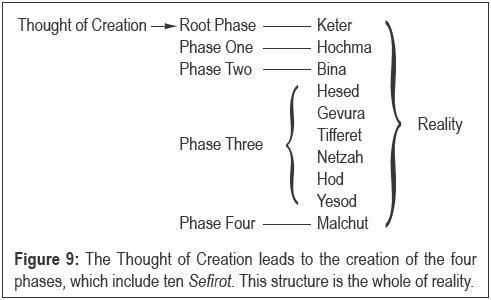All in One and One in All
“We see a great world before us, and all the wondrous things it contains. But in fact, we see all that, only within us. In other words, there is a kind of photographic machine in the back of our brain, which portrays everything that we see, and there is nothing outside of us!”
–Baal HaSulam,
“Preface to the Book of Zohar”
Of all the unexpected concepts found in Kabbalah, there is none so unpredictable, unreasonable, yet so profound and fascinating as the concept of reality. Had it not been for Einstein and the subsequent quantum physicists, who revolutionized the way we think about reality, the ideas presented here would have been brushed off as absurd.
In the previous chapter, we said that evolution unfolds as a manifestation of our growing egoistic desires. But if our desires propel the evolution of our world, what would happen if we had no desires at all? Would there still be a world? Because if desires propel evolution, perhaps our world is just a figment of our desires, a tale we want to believe?
In Chapter Three, we said that Creation started from the Thought of Creation, which created the Four Basic Phases of Light. These Phases include ten Sefirot: Keter (the Root Phase), Hochma (Phase One), Bina (Phase Two), Hesed, Gevura, Tifferet, Netzah, Hod, and Yesod (all of which comprise Phase Three — Zeir Anpin), and Malchut (Phase Four). The Book of Zohar states that the whole of reality consists of only ten Sefirot, or the four basic phases (Figure 9).
Just as atoms are the building blocks of our world, the ten- Sefirot structure is the building block of the spiritual worlds. Both are made of “positive,” giving parts, which include the Sefirot from Keter to Yesod, and a “negative,” receiving part, Malchut. This is the basic, indivisible structure of the spiritual reality.
In the previous chapter we said that “the only difference between people is in the way they want to experience pleasure,” in their desires. Thus, our different desires create a different reality for each of us, though all of our “realities” consist of the same basic substance: a desire to experience pleasure.
When we use our corporeal, egoistic desires to experience reality, we call what we experience “our world.” And when we experience the ten- Sefirot structure with our spiritual desires, we call it “the spiritual world.” Spiritual desires also have a different name, Kelim (vessels).
And just as we need senses to perceive the physical reality, we need vessels to perceive the spiritual reality. The purpose of the wisdom of Kabbalah is to help us develop those vessels. As our brains use the letters of the alphabet to study and describe this world, our spiritual vessels use the ten- Sefirot structure to study and describe the spiritual worlds.
And lastly, to understand this world, we must follow certain restrictions and rules of study and experimentation. Similarly, to achieve the most accurate understanding of spirituality, we need to know which rules and restrictions to follow in the spiritual worlds.

